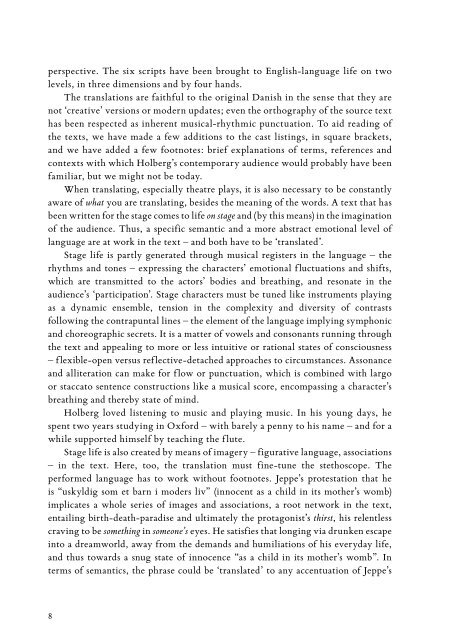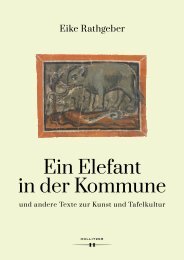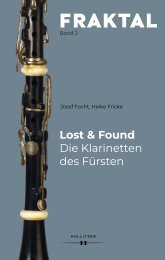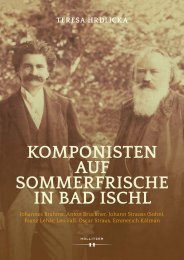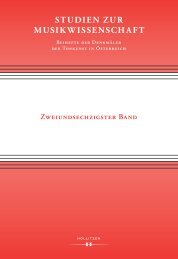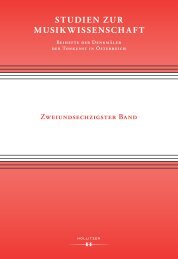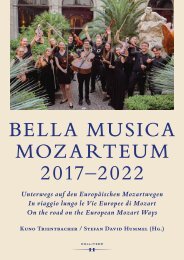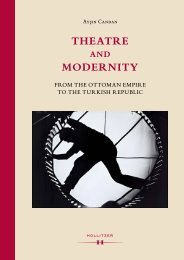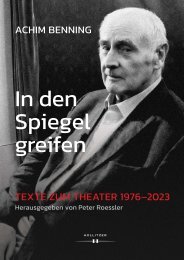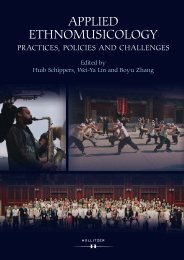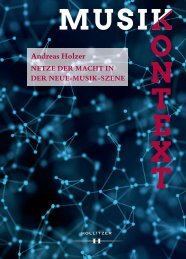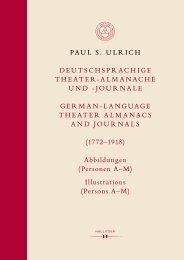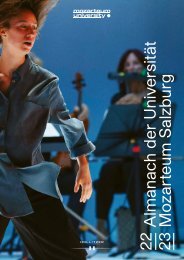Leseprobe_Holm_Holberg Plays Volume I
You also want an ePaper? Increase the reach of your titles
YUMPU automatically turns print PDFs into web optimized ePapers that Google loves.
perspective. The six scripts have been brought to English-language life on two<br />
levels, in three dimensions and by four hands.<br />
The translations are faithful to the original Danish in the sense that they are<br />
not ‘creative’ versions or modern updates; even the orthography of the source text<br />
has been respected as inherent musical-rhythmic punctuation. To aid reading of<br />
the texts, we have made a few additions to the cast listings, in square brackets,<br />
and we have added a few footnotes: brief explanations of terms, references and<br />
contexts with which <strong>Holberg</strong>’s contemporary audience would probably have been<br />
familiar, but we might not be today.<br />
When translating, especially theatre plays, it is also necessary to be constantly<br />
aware of what you are translating, besides the meaning of the words. A text that has<br />
been written for the stage comes to life on stage and (by this means) in the imagination<br />
of the audience. Thus, a specific semantic and a more abstract emotional level of<br />
language are at work in the text – and both have to be ‘translated’.<br />
Stage life is partly generated through musical registers in the language – the<br />
rhythms and tones – expressing the characters’ emotional fluctuations and shifts,<br />
which are transmitted to the actors’ bodies and breathing, and resonate in the<br />
audience’s ‘participation’. Stage characters must be tuned like instruments playing<br />
as a dynamic ensemble, tension in the complexity and diversity of contrasts<br />
following the contrapuntal lines – the element of the language implying symphonic<br />
and choreographic secrets. It is a matter of vowels and consonants running through<br />
the text and appealing to more or less intuitive or rational states of consciousness<br />
– flexible-open versus reflective-detached approaches to circumstances. Assonance<br />
and alliteration can make for flow or punctuation, which is combined with largo<br />
or staccato sentence constructions like a musical score, encompassing a character’s<br />
breathing and thereby state of mind.<br />
<strong>Holberg</strong> loved listening to music and playing music. In his young days, he<br />
spent two years studying in Oxford – with barely a penny to his name – and for a<br />
while supported himself by teaching the flute.<br />
Stage life is also created by means of imagery – figurative language, associations<br />
– in the text. Here, too, the translation must fine-tune the stethoscope. The<br />
performed language has to work without footnotes. Jeppe’s protestation that he<br />
is “uskyldig som et barn i moders liv” (innocent as a child in its mother’s womb)<br />
implicates a whole series of images and associations, a root network in the text,<br />
entailing birth-death-paradise and ultimately the protagonist’s thirst, his relentless<br />
craving to be something in someone’s eyes. He satisfies that longing via drunken escape<br />
into a dreamworld, away from the demands and humiliations of his everyday life,<br />
and thus towards a snug state of innocence “as a child in its mother’s womb”. In<br />
terms of semantics, the phrase could be ‘translated’ to any accentuation of Jeppe’s<br />
8


